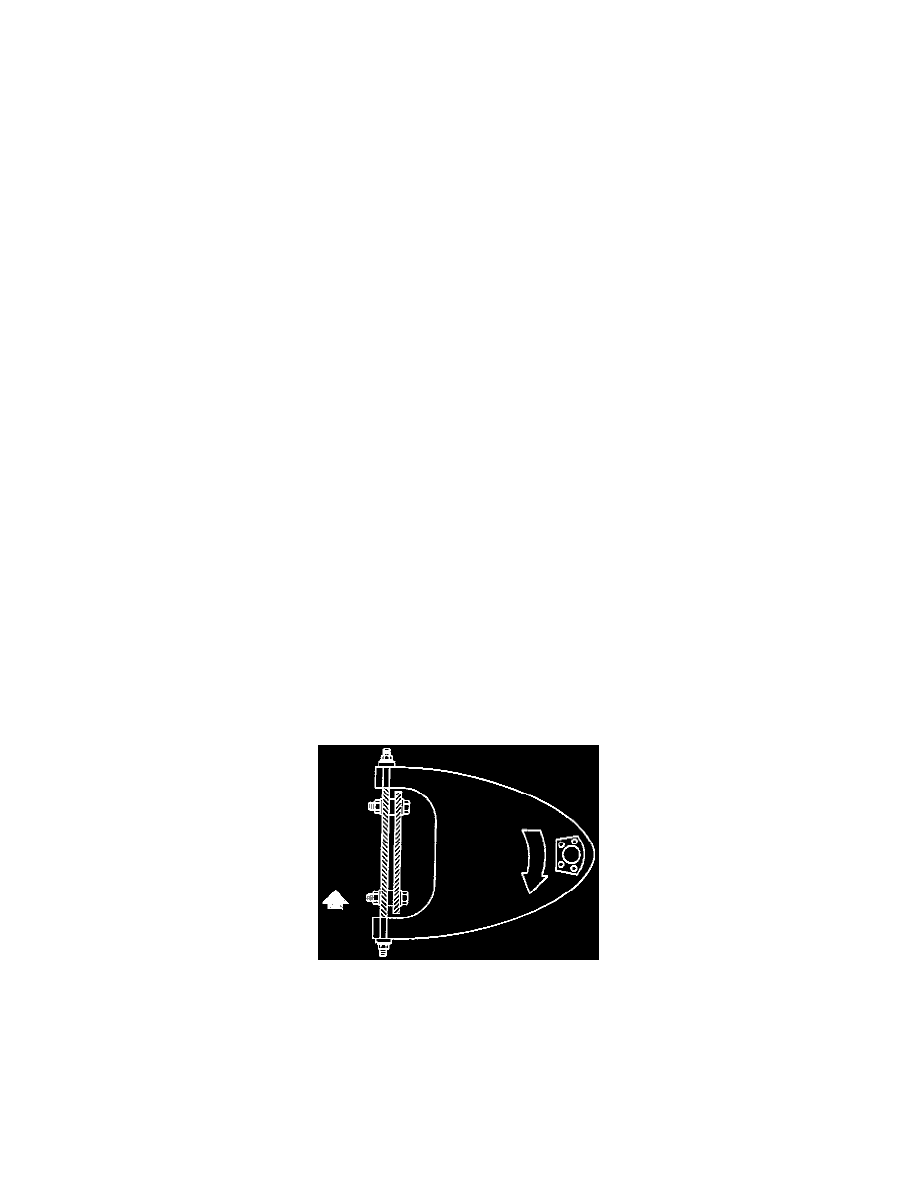Hombre XS Space Cab L4-2.2L CPC (1997)

Alignment: Service and Repair
General Information
GENERAL INFORMATION
Satisfactory vehicle operation may occur over a wide range of front wheel alignment settings. If the settings vary beyond certain tolerances,
adjustments are advisable.
Set the front wheel alignment to specifications while the vehicle is in its normally loaded condition. Vehicles which are consistently operated with
heavy loads should have toe-in adjusted with the vehicle under heavy load. This procedure should result in longer tire life.
Install alignment equipment according to the manufacturer's instructions then measure alignment angles and record the readings. If adjustments are
required, make them in order: caster, camber, and toe-in.
Preliminary Inspection
NOTE: Before making any adjustments affecting caster, camber, or toe-in, the following front end inspections should be made.
1. Check the tires for proper inflation pressure.
2. Inspect the hub and bearing assemblies for excessive wear.
3. Inspect the ball joints, tie rod ends, relay rods and idler arm.
4. Check the tires and wheels for runout.
5. Check the vehicle trim heights. Any corrections must be made before adjusting caster, camber, or toe-in.
6. Check the steering gear for looseness at the frame.
7. Inspect the shock absorbers for leaks or any noticeable noise.
8. Check the control arms or stabilizer shaft attachments for looseness.
9. Inspect the alignment equipment, and when using it follow the manufacturer's instructions.
10. Check the level of the vehicle. The vehicle must be on a level surface, fore, aft, and side to side.
Camber and Caster
CAMBER AND CASTER
NOTE:
^
Before adjusting caster and camber angles, the front bumper should be raised and released twice to allow the vehicle to return to its normal height.
^
Caster and camber adjustments are made by inserting shims between the upper control arm shaft and the frame bracket. Shims may be added,
subtracted or transferred to change the readings.
^
To adjust caster and camber, loosen the upper control arm shaft-to-frame nuts, add or remove shims as required, and torque the nuts. Toe-in must
be checked after changing caster or camber.
1. To adjust caster, transfer shims from front to rear or rear to front. The transfer of one shim from the rear bolt to the front bolt will decrease positive
caster.
